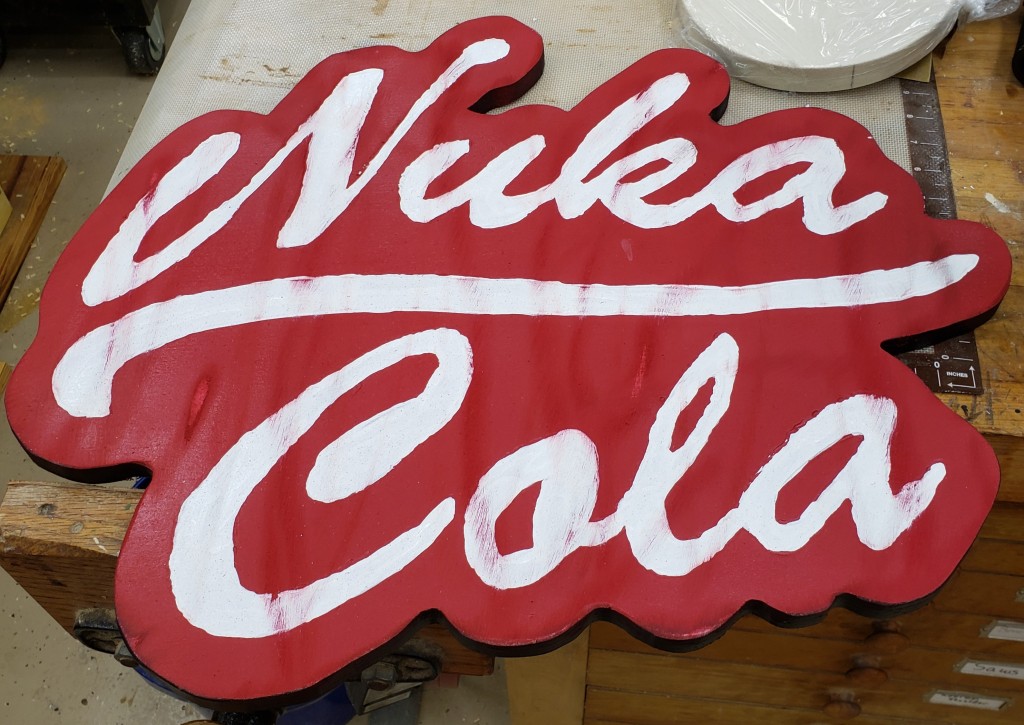I have been a fan of the Fallout video game series for a good 20 years, since I first played the original game. Sometimes called Diesel Punk, imagine a retro-futuristic world imagined in the 1950s. Everything is nuclear powdered, sleek ray guns, cute suburban homes with tv dinners and a cold war that went hot. The game has a lot of back story and atmosphere including a soda brand called Nuka Cola that looks a lot like coke.
I am also a fan of this funny Russian guy that makes signs with lots of skill and few tools. He did a few different fallout based signs, so I had to follow his lead and make my own Nuka Cola sign. His methodology is simple. Project onto a piece of plywood with a cheap projector, trace, carve those lines in with a dremel so you can see them after you paint, then paint the various layers. I still managed to mess up a little. First up, the projection.
I found a rough text/logo of what I wanted and used inkscape to make the offset for the sign outline. I hand traced it and moved on to cutting the outline. It took a little special sanding to get it all straight and clean, but I was happy with the shape.
Next came the carving and a bit of an issue. The plywood I used was pretty light and I had trouble seeing how deep I was carving. I started with a small pointy burr, and moved to a much larger, too large, ball carver. Later when I painted it all, everywhere I touched was obvious, and the deeper cuts were obviously too much. Next time I might prime with a neutral color before starting the projection. It will make the pencil line standout better, and make the dremel lines more obvious.
With it painted, the base red coat it might be a bit more obvious how uneven some of the carving is. The jigsaw guy mostly back sprays with black to form a border. I did that too, but the complex shape in a few spots means I will have to go back and do it again after putting all the red down.
With the base of red down, you fill in the letters with white. I went for house paint and did 3 coats. It built up more texture than I wanted, a good quality craft paint might have been better. In the end it didn’t matter that much. The biggest issues was my wobbly carve lines that were too big in places. It kept my edges from being very crisp. It is hard to paint to a clean line when the guide is over an 1/8″ wide. A weathering trick he uses sometimes is to hit the finished product with a wire brush on a drill. Genius, it looks great.
Overall I am really happy with the project, but I need to work on my dremel carving technique and hand painting. I have another sign idea in mind, so hopefully the lessons learned will be applied there. It looks great in my shop next to a metal fallout sign I got ages ago.



















